Coffee Knowledge Lists
-
Boutique coffee learn from Ethiopia and snow coffee raw beans
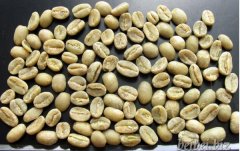
Yejaschefine is the representative of East African boutique coffee (specialty coffee). It has a very special and unusual aroma of citrus fruit and flowers, which makes it one of the most distinctive coffee in the world, which is rare and expensive. Medium to pointed (delicate) acidity and medium body, smooth and well balanced cup with a creamy
2014-11-11 Coffee knowledge boutique caffeine Ethiopia Yega snow coffee -
Introduction of boutique coffee beans Indonesia Sulawesi Coffee Raw beans
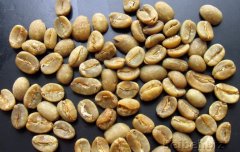
The main coffee producing areas in Indonesia (Southeast Asia) are Sumatra, Java and Sulawesi. Sulawesi (Celebes) Sulawesi, the former Dutch colony of Sulawesi, formerly known as Celebes, was named after a sailor was stranded here in 1511 when a sailor was caught in a severe storm at sea, but it is now named because
2014-11-11 Coffee knowledge boutique coffee beans Indonesia Sulawicarosi coffee raw beans -
Fine Coffee from North Sumatra A.P. Robusta coffee raw beans
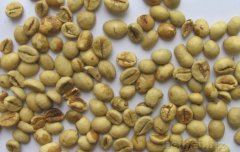
North Sumatra is located in northern Sumatra, the fifth largest island in the world, facing the Indian Ocean to the west, the Strait of Malacca to the east, Aceh to the north, and West Sumatra to the south, with a population of about 11.3 million. Its unique geographical conditions give birth to exuberant animal and plant ecology and rich and changeable natural landscape. Romda coffee trees are resistant to high temperature, cold, moisture and tolerance.
2014-11-11 Coffee knowledge boutique caffeine Sumatra Robusta coffee raw beans -
Fine Coffee study Yunnan BM (Blue Mountain) Coffee Raw beans
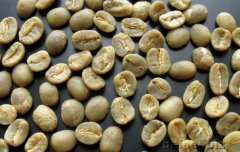
The top Yunnan coffee variety, growing at 1500 to 2000 meters, is BM coffee (bm, the most customary explanation should be the Blue Mountain coffee introduced from Jamaica), grown in Simao and Baoshan areas of Yunnan. After excellent processing, the bean shape is neat and uniform, the silver skin is very clean after washing, the content of defective beans is very small, and the texture is relatively hard. Baked blue mountains in Yunnan, bite up
2014-11-11 Coffee knowledge boutique coffee Blue Mountain Coffee Coffee Raw beans -
High-quality coffee beans introduce Yunnan small coffee round beans Peaberry
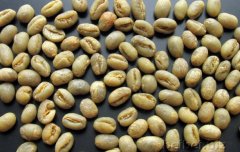
Coffee cherry fruit generally has two flat seeds, if one does not grow properly, only one bean seed sprouts, in a fruit there is only a small round bean (deformed), with a small crack in the middle, it is called pea-shaped coffee bean (peaberry). Round beans (Peaberry) are also known as perle, Perla and caracol. A normal Arabica.
2014-11-11 Coffee knowledge fine coffee beans Yunnan coffee beans small grains of coffee -
Introduction to Cuba Marago Rippe Coffee Elephant beans
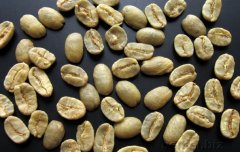
Elephant bean, giant coffee bean (Elephant bean), which is 3 or more times larger than other coffee beans, has a taxonomic name Maragogype, derived from Maragogype County in the state of Bahia, Brazil, where the taxonomic status of Giant Coffee Bean was first established in 1870 as an Arabica derived species (hybrid). Cuba
2014-11-11 Coffee knowledge boutique coffee beans Cuban coffee Marrago skin coffee elephant beans -
Boutique coffee beans introduce Ethiopian mocha coffee raw beans
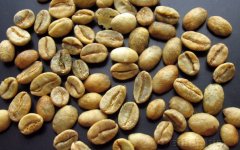
Arabian coffee is the hometown of Arabian coffee, which grows at high latitudes and needs a lot of manual care. Here is the famous Ethiopian mocha, which has a sour taste similar to that of wine, fragrant and productive. Ethiopia also sells coffee through the port of Mocha in neighboring Yemen across the Red Sea, so Ethiopian sun-treated coffee is often called Mo.
2014-11-11 Coffee knowledge boutique coffee beans Ethiopia coffee raw beans -
Boutique Coffee beans introduce Tanzania PB Coffee Raw beans / Round beans
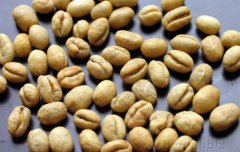
Most of the Tanzanian beans are grown in Mr. Kilimanjaro and Mt, near the northern Kenyan border. The Meru area, often called "Clemangaro", is occasionally named after the distribution center Moshi or Arusha. In addition, on the south side of the border, a little washed Arabica beans are produced to the nearby big city of Baya (
2014-11-11 Coffee knowledge boutique coffee beans Tanzania coffee raw beans -
Introduction of boutique coffee beans raw beans from Robusta, Java, Indonesia
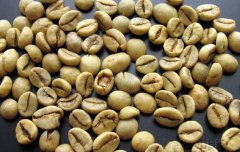
In the early 1970s, Java cut down Arabica trees introduced by most Dutch and planted Robbosa beans instead. Since then, Java coffee has become greasy, plain and has a strong smell of wheat and tea. Among the few remaining Arabica estates, Djampit is the most famous. These beans are similar to other Indonesian beans, but with obvious sour taste and no texture.
2014-11-11 Coffee knowledge boutique coffee beans Indonesia Java coffee beans Robusta raw beans -
High-quality coffee learn the cross section of fresh coffee beans
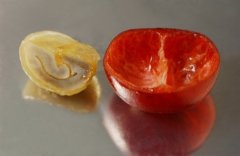
Cross section of fresh coffee beans
2014-11-11 Coffee knowledge boutique coffee fresh coffee beans cross section -
Boutique coffee beans introduce Colombian SUPREMO grade coffee raw beans
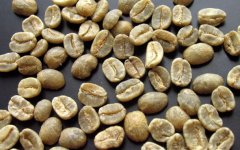
Colombian coffee is one of the few original coffee sold in the world under the name of the country. In terms of quality, it has won praise unmatched by other coffee. The country is the world's largest exporter of Arabica coffee beans, while robusta coffee is rarely grown. It is also the world's largest exporter of washed coffee beans (Washed beans). Compared with other producing countries, Colombia is more
2014-11-11 Coffee knowledge boutique coffee beans Colombia -
Introduction to Brazilian Santos Coffee Raw beans
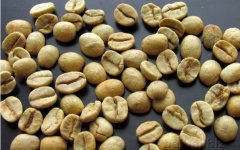
Although Brazil produces 30 to 35% of the world's coffee annually, ranking first in the world, none of the Brazilian beans can be called the top coffee. The mountains are covered with coffee trees in southern Brazil, but Santos is the only one that can be put on the table; most of the other hastily processed beans are used to make instant coffee and easy-to-open coffee. Growth of Santos coffee
2014-11-11 Coffee knowledge boutique coffee beans Brazil Santos coffee raw beans -
Fine coffee beans Yunnan small grains of coffee raw beans
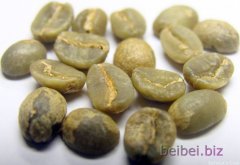
The western and southern parts of Yunnan Province are located between 15 N and the Tropic of Cancer, most of which are 1000-2000 meters above sea level. The topography is dominated by mountains and slopes, with large ups and downs, fertile soil, sufficient sunshine, rich rainfall and large temperature difference between day and night. These unique natural conditions form the special taste of Yunnan small-grain coffee, which is strong but not bitter, fragrant but not strong, slightly fruity.
2014-11-11 Coffee knowledge boutique coffee beans Yunnan coffee beans coffee raw beans -
Boutique coffee beans Mavis bank Peaberry in Jamaica Blue Mountain Garden
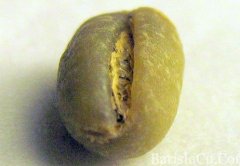
Only about 2% of Blue Mountain coffee producers produce Peaberry. It depends on time and luck to buy this kind of coffee beans. Be careful to take a sip of coffee, temporarily can not find more words to describe, only think of two words: perfect. The taste of Peaberry has been enhanced in terms of bitterness and astringency. Generally speaking, a little bit of frivolous acid on the surface of the Blue Mountains is also immersed in it as a whole.
2014-11-11 Coffee knowledge boutique coffee beans Jamaica Blue Mountain coffee beans -
Fine Coffee Beans Jamaica Blue Mountain Mavis bank Grade 1 Green Beans
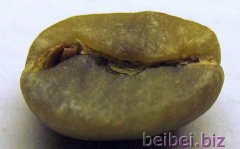
Jamaica Blue Mountain Mavis bank Grade 1 Green beans The unique flavor of Blue Mountain coffee is related to the geographical location and climatic conditions of Blue Mountain. Generally speaking, south of the Tropic of Cancer and north of the Tropic of Cancer, this area is suitable for growing coffee and is called the Coffee Belt. Jamaica is just south of the Tropic of Cancer. Blue Mountain is steep, the air is fresh, there is no pollution, it rains all year round, and the temperature difference between day and night is large
2014-11-11 Coffee knowledge Fine coffee beans Jamaica coffee Blue Mountain coffee beans -
Introduction to the characteristics of different kinds of coffee in boutique coffee

Coffee is produced from the equator to 15 degrees north latitude and is produced in South America, Indonesia and Africa. But the coffee produced from the equator to 15 degrees north latitude is too strong and bitter. In fact, the best coffee should be produced between 15 degrees north latitude and the Tropic of Cancer. Yunnan coffee in China is a product of the tropics. You may not believe that the best coffee producing area in the world is in the clouds of China.
2014-11-11 Coffee knowledge boutique caffeine coffee types coffee characteristics -
The general knowledge of fine coffee explains the types of coffee.

Today, there are two main types of coffee grown most widely in the world: Arabica beans (Coffee Arabica) and Robota beans (Coffee Robusta). Arabica Arabica Robusta Robusta is mainly produced in tropical Central and South America, accounting for 3/4 of the world's output. It is produced in Madagascar in central, western and eastern Africa, and Indonesia in Asia.
2014-11-11 Coffee knowledge boutique coffee coffee common sense coffee types -
The Flavor characteristics of Coffee from Fine Coffee production area

After coffee beans spread to all parts of the world, due to the different climate, soil quality, planting methods and processing methods, the taste of coffee beans can be said to be completely different. Here is a list of the basic flavor characteristics of Arabica coffee beans from different producing areas (it should be noted that the flavor of coffee produced by different producing areas and different farms in the same place will be different. Some people usually think that coffee
2014-11-11 Coffee knowledge boutique coffee coffee common sense origin coffee flavor -
How to choose fresh coffee beans

Freshness is the life of coffee, how to determine the freshness of coffee beans? There are three steps: smell, look and peel. Smell: close the coffee beans to the nose, deeply smell, is it possible to clearly smell the aroma of coffee beans, if yes, on behalf of coffee beans fresh enough. On the contrary, if the aroma is weak, or has begun to appear greasy, it means that the coffee beans are completely stale.
2014-11-11 Coffee knowledge boutique coffee coffee knowledge fresh coffee beans -
Coffee common sense what is a coffee belt (COFFEE WORLD MAP)

Coffee trees grow in tropical or subtropical agricultural gardens centered around the equator and called coffee belts. Most of the coffee production is between the Tropic of Cancer, 25 degrees north of the tropical or subtropical equator and 30 degrees south of the equator. An area with an annual average temperature of 16-25 degrees Celsius, no Frosts Descent and rainfall of 1600-2000 mm. At present, coffee is mainly produced by seven countries.
2014-11-11 Coffee knowledge coffee common sense coffee belt
